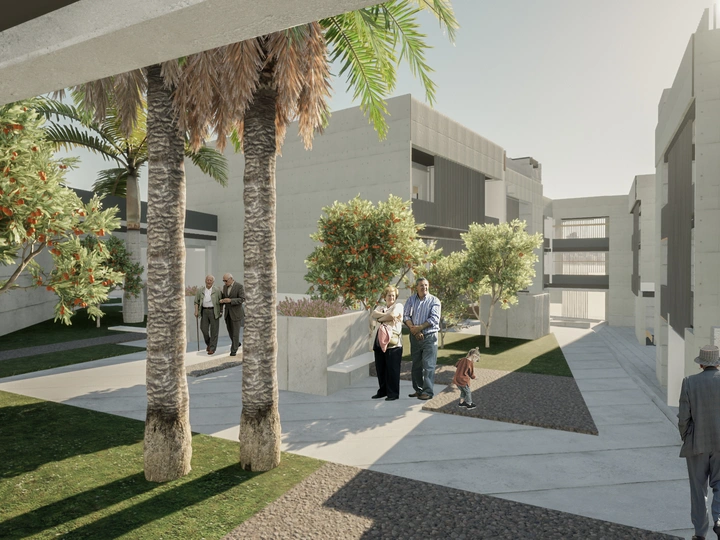"THE CARING CITY" Architecture as a human right

My name is Rocío Curto Castaño, I am a freelance architect, BIM Manager and illustrator based in Seville, Spain. During my career I have focused my projects and research on the care of coexistence in the city, through promoting the importance of care and the most vulnerable phases of people’s lives: childhood and old age. This topic affects the climate change issue, as these layers of the society are the most vulnerable to the failed urban plans and extreme climate problems. This interest for social issues and enviroment took to be a part of the Solar Decathlon team of the University of Seville in 2019, a competition related to urban en housing problems related to sustainability.
After completing my final project, and having obtained my Architect’s degree in 2020, I became part of the University of Seville through the figure of Honorary Assistant.
I develop my autonomous activity through external participation with different studies, and through habitat management with own projects, helping neighboring communities and with projects aimed at reusing buildings and a new efficient plant.
We will understand by “efficient community” one that is capable of self-management, not only energetically, but also socially. In this sense, we will specify this social efficiency around the two most vulnerable layers:
childhood and old age. These two layers represent the two extremes of human life, which are often left out of city systems, since one is in a “pre-productive” stage and the other is in its “post-productive” stage.
As for children, it is essential to reconsider the situation of child care in cities, from their involvement as urban agents who easily detect deficiencies in public space at the level of design and climate impact, as active agents in detecting deficiencies in the model of educational spaces in our cities.
As for the elderly, they are the most likely to suffer associated health problems and the most excluded from civic activity, either due to physical impossibility or social impossibility. This leads to the need to think about urban fabrics that specifically welcome these people and who are capable of having an active participation in the urban fabric.
The project shown here not only brings together all these concepts and provides the necessary keys for future projects
GENERAL OBJETIVE:
Generate a manual of good practices in the face of housing emergencies, with special emphasis on childhood and old age.
SPECIFIC OBJETIVES:
1. Generate a manual of good practices in the face of a housing emergency
2. Generate housing models that allow the integration and generation of communities of people who are in their post-productive stage
3. Generate urban and educational models that can address the needs of children
4. Generate urban fabrics that can address the care system from the climatic to the social, attending to the regeneration of spaces as opposed to the creation of new fabrics.